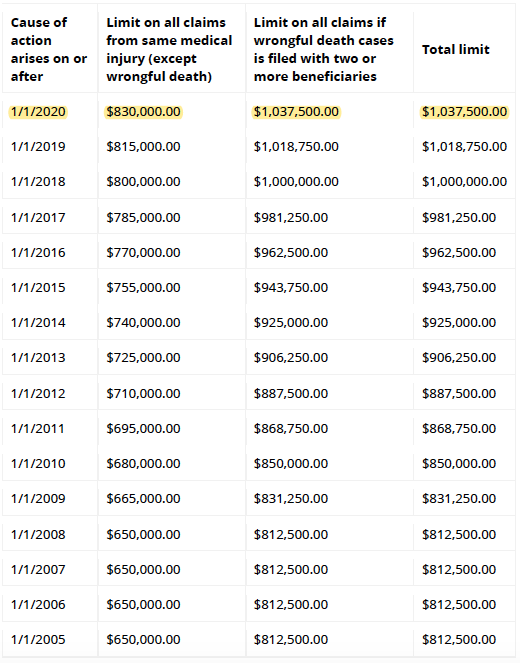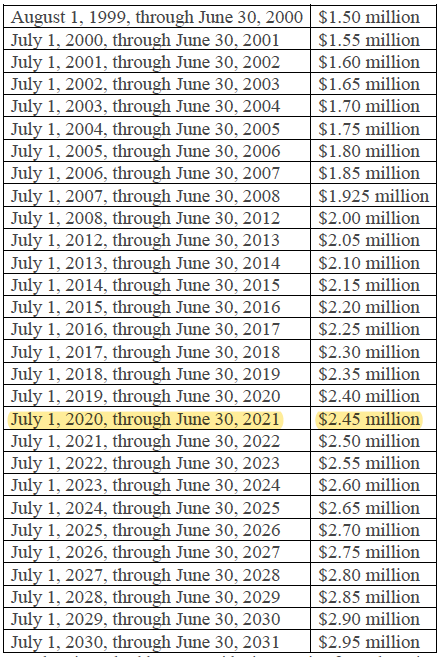Medical Malpractice Caps: What You Need to Know

If you have suffered physical or mental injuries as a result of medical care, then you may have the right to be financially compensated for the harm you’ve sustained.
As of 2020, however, thirty out of the fifty U.S. states have a “cap” on the amount of money that can be recovered from a medical malpractice case.
The laws about these caps differ by each state and can be complex, so here we will break down some of the questions you may have on medical malpractice caps in Virginia and Maryland, two of the states where Bertram & Murphy practices.
How Are Malpractice Damages Calculated?
In a medical malpractice case, two kinds of damages are usually calculated: special damages and general damages. Examples of these damages are listed in the table below:
| General Damages (Non-Economic) | Special Damages (Economic) |
| Pain from Injury | Lost Earnings |
| Suffering from Lasting Deformities | Lost Earning Capacity |
| Mental Anguish | Medical Bills |
| Emotional Distress | Other Financial Losses |
Special damages are straightforward to calculate because they stem from concrete financial losses, whereas calculations of general damages attempt to put a dollar amount on the more intangible effects of a patient’s pain and suffering (All Law). General damages for pain and suffering are determined by jurors based on the evidence presented at trial. As a result, the amounts awarded for general damages can vary tremendously, even for cases with similar injuries.
Most jurors do not realize that the number of damages they award will ultimately be limited by the state cap. So, what are these caps? Well, that depends on the state.
What Is the Maryland Cap?
In the state of Maryland in 2020, there is an $830,000 cap on the general damages that a defendant may have to pay for negligent care in 2020. See the table below for care in prior years. The only exception to this is for a wrongful death case with two or more beneficiaries, in which case the cap increases to 125% of the original value, or $1,037,500.
There is no cap, however, on the special damages that an injured party or the family of a decedent may be awarded. (Maryland Law). The table below shows the cap in Maryland by year of injury:

What Is the Virginia Cap?
In the Commonwealth of Virginia, there is a total cap on damages for general and special damages combined, including cases of wrongful death regardless of the actual amount of economic losses or future medical care the injured person may need. The cap applies based on the year in which the injury occurred, not the year the case is filed (Virginia Law). Below is a table of the Virginia caps by year since 2000.

How Will This Affect My Case?
The caps on damages in Maryland and Virginia will have no effect on the verdict of your case, but they will limit the amount of financial compensation you are able to receive should you prevail. Even if a jury awards a larger amount for your pain and suffering, the judge will decrease the jury verdict to the maximum allowed under the applicable cap. Take a look at the hypothetical example below to see how these caps would affect your financial compensation in Maryland or Virginia.
|
Maryland |
Virginia |
|
The jury decision: ● General Damages: $3 million Total: $3.75 million |
The jury decision: ● General Damages: $3 million Total: $3.75 million |
|
Actual compensation: ● General Damages: $830,000 Total: $1.58 million |
Actual compensation: ● Total reduced from $3.75 million to $2.45 million cap Total: $2.45 million |
Why Are There Caps?
There are a variety of strong arguments against caps on medical malpractice damages. Opponents of caps argue that they prevent patients from receiving the compensation they deserve based on the evidence after experiencing serious bodily harm or injury, and cite evidence that medical negligence is the third leading cause of death in the U.S (Johns Hopkins).
There is no clear evidence that caps affect defensive medicine, physicians’ location decisions, or the cost of health care to consumers (Milbank Quarterly). In some states, medical malpractice caps have been deemed unconstitutional (Expert Institute). While the future of caps on medical malpractice remains uncertain, the Bertram & Murphy will be here to help answer any questions you may have about your case. Contact us for a free case analysis with no obligation.













